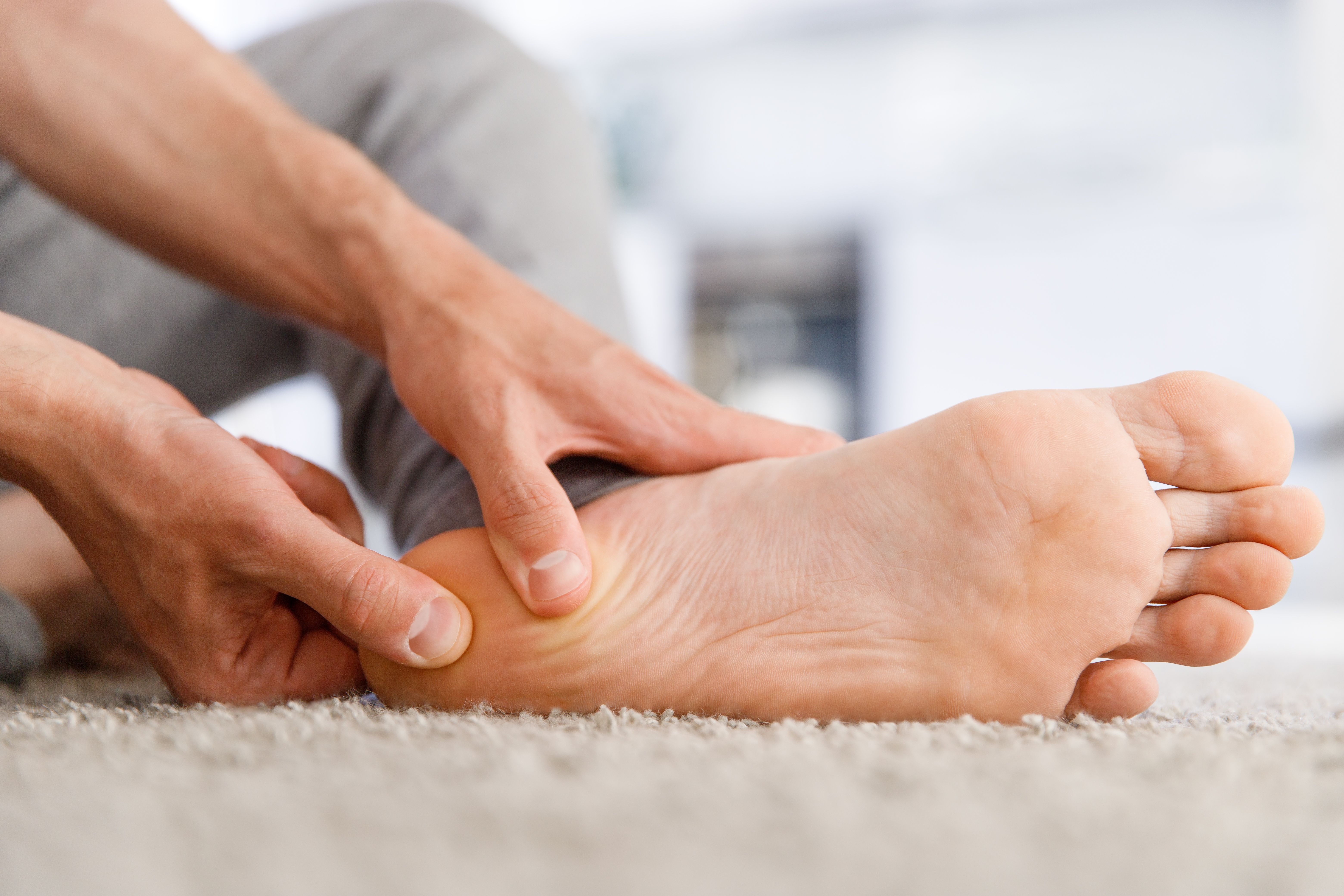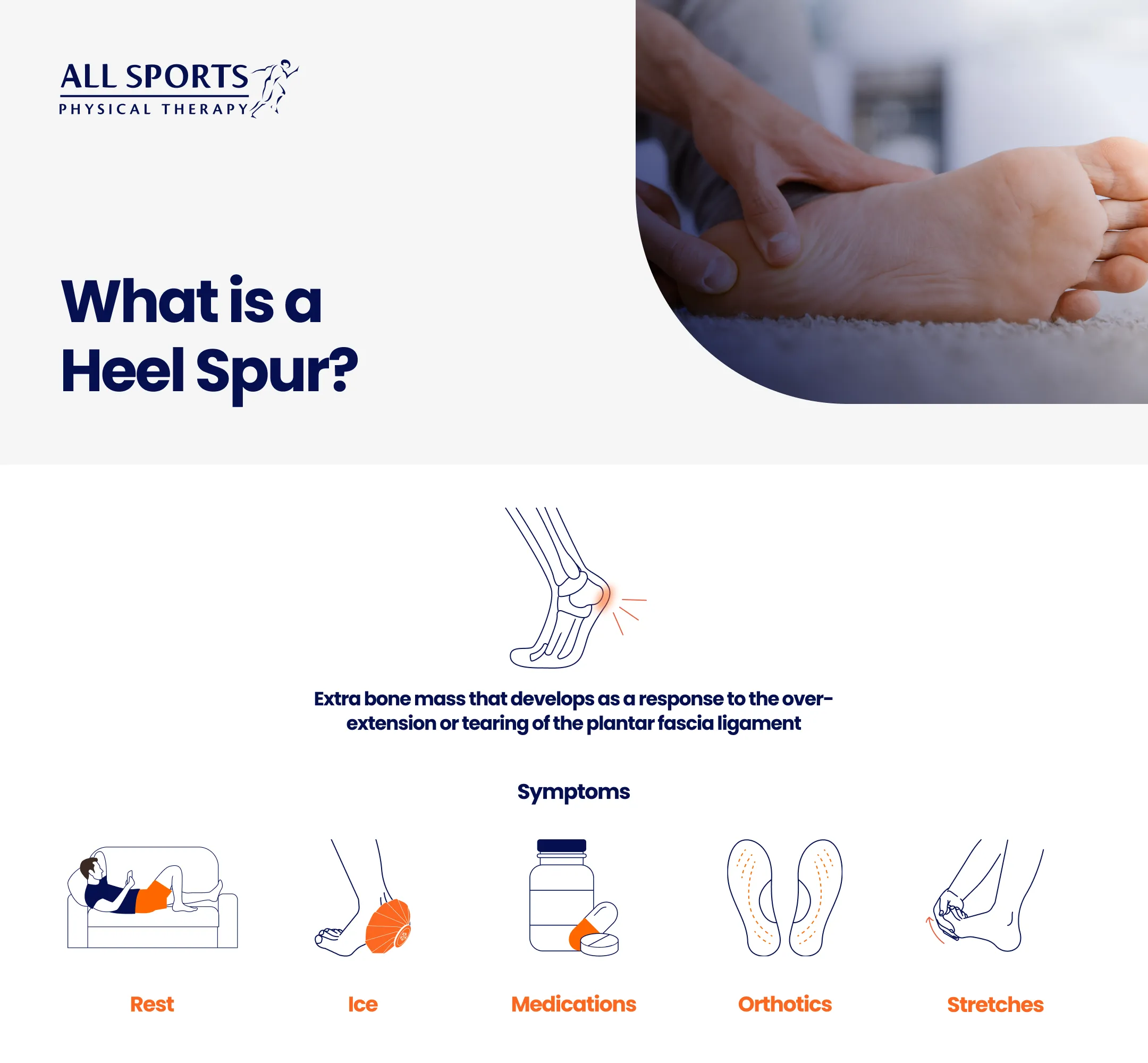What is a Heel Spur?
Heel Injuries, Workout Injuries

Stubborn heel pain? Heel spurs and plantar fasciitis may be the cause — here’s what you should know.
If you run regularly, have flat feet, or walk with an abnormal gait, you stand an increased risk of developing a heel spur, a bony protrusion at the bottom rear of your foot. The spur forms where the bone meets the ligament running from your heel to the ball of the foot, known as the plantar fascia.
About 15% of people have heel spurs, and the incidence rises with age. One study found that 38% of subjects between the ages of 2 and 96 had heel spurs, with older adults (40 to 79) showing a higher number of heel spurs. That’s because when you age, the ligament stiffens, and fat deposits on the bottom of your foot are lost.
If you have any of the risk factors mentioned above, you’re probably asking yourself: What are heel spurs? How do I know I have one? And what are my treatment options? Read on to find out.
What are heel spurs?

You might be surprised to know that the pain in your heel isn’t caused by the spur. Rather, it’s due to another painful foot condition called plantar fasciitis, an inflammation or even tearing of the band of tissue running from the heel to the toes. Stabbing pain, especially when you take the first step out of bed, is a classic symptom of plantar fasciitis. While it subsides when you move, the pain usually returns after a period of rest.
The heel spur forms as a reaction to the over-extension or tearing of the plantar fascia ligament. The heel builds extra bone mass, which then develops into a bony spur. However, the spur itself doesn’t produce the pain; it’s the plantar fasciitis that is making your heel painful. Your doctor can diagnose a heel spur with the help of an X-ray.
Heel spur treatments
The 48 million people in the U.S. who run or jog on hard surfaces run the greatest risk of developing a heel spur. But those who stand for long periods of time, especially if they have flat feet, are also at risk. Improper gait and obesity are other risk factors.
Since heel spurs typically accompany plantar fasciitis, your treatment option will be very similar to the latter condition and will include:
- Rest. Skip your daily run for a bit and do exercises, such as biking or swimming, that are less impactful on your feet.
- Ice. Icing the bottom of your foot can ease the pain. A quick at-home trick is to freeze a bottle of water and roll it across your foot.
- Medications. To relieve the inflammation, talk to your doctor about taking anti-inflammatories.
- Orthotics. Raise your flat arch with an orthotic insert, available commercially or through a prescription. Also, buy shoes with strong arch support, especially running footwear.
- Stretches. Simple at-home stretching exercises can relieve the inflammation in the plantar fascia ligament and help strengthen that area of your foot.
Rarely is surgery needed to remove the bony spur. Conservative methods are highly successful in stopping the pain of plantar fasciitis, which is the main source of foot discomfort. With therapy, you should also be back to normal in no time.
Don’t let heel pain throw you off track
Heel pain can make running and walking painful with each step, but you don’t have to live with it. The expert team of therapists at All Sports Physical Therapy can determine the source of your heel pain and develop a customized treatment plan. Call us today for a consultation.



